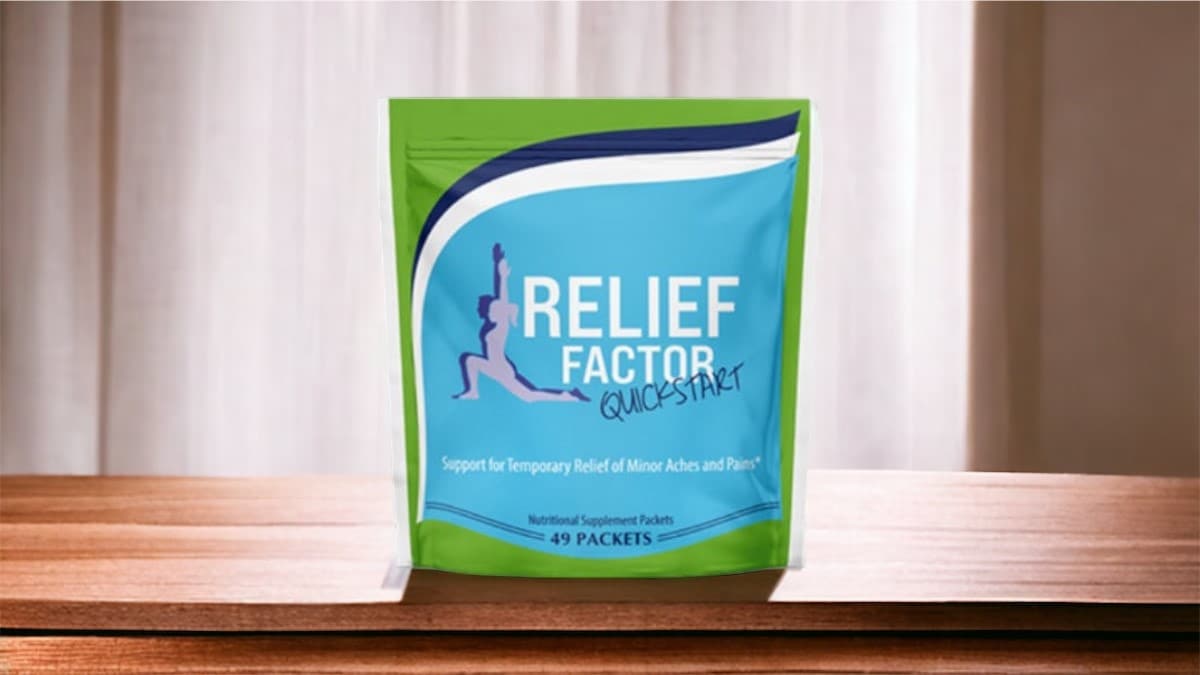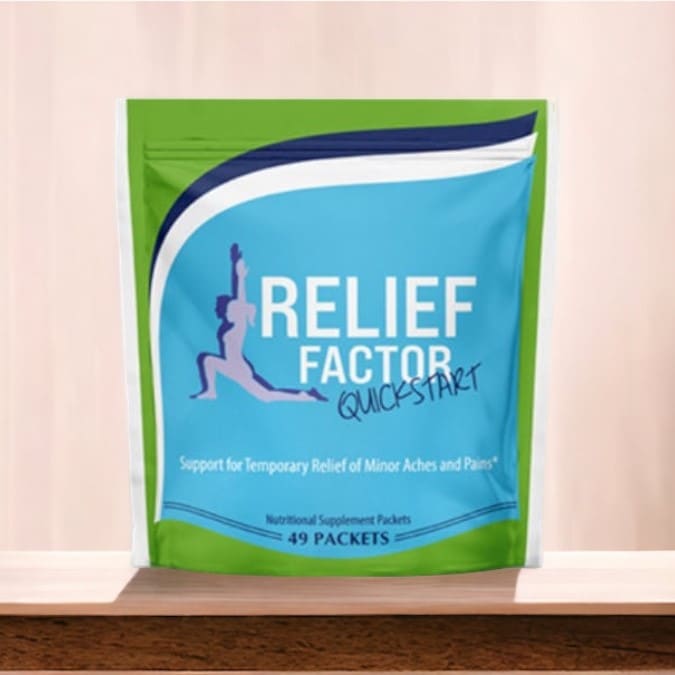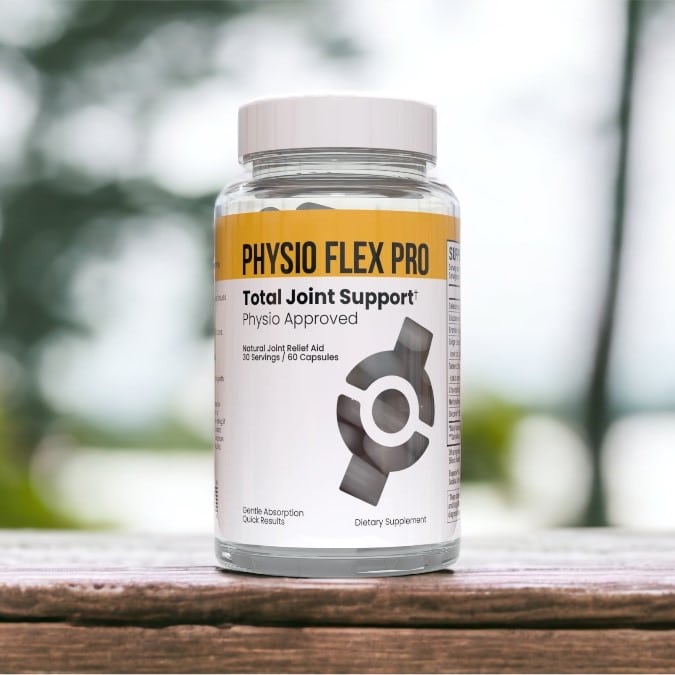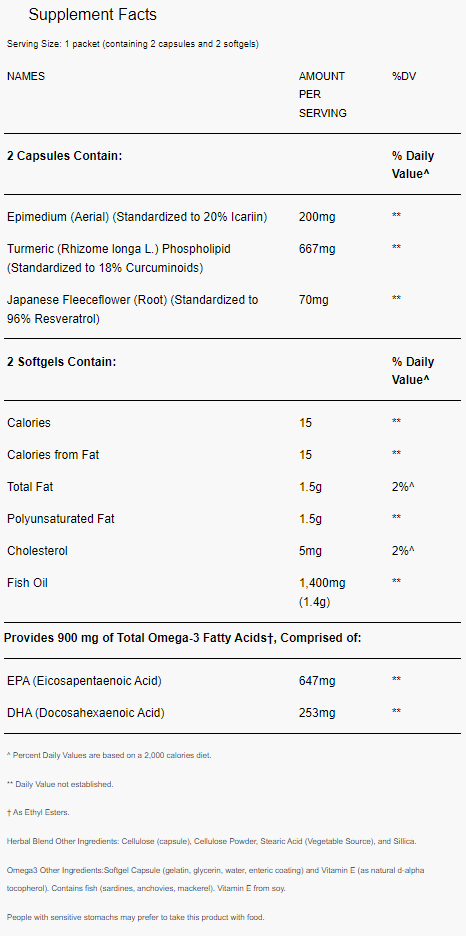Relief Factor Review - Everything You Need To Know

September 18, 2023
Trying to understand the world of joint health supplements can be overwhelming. Among the many products available, Relief Factor by Promedev has gained significant attention. The company boldly claims that "Tens of Thousands of Americans Are Getting Out of Pain, 100% Drug-Free." But before making any decisions, it's essential to dig into the science behind this eye-catching statement.
Relief Factor is composed of a mixture of natural ingredients, each known for its anti-inflammatory and pain-relieving properties. However, it's important to closely examine how these ingredients work together in the body, assess the scientific evidence supporting their effectiveness, and identify any potential side effects.
Whether you're an athlete dealing with ongoing muscle soreness or a senior citizen facing the aches and pains that come with age, this review will help you decide if Relief Factor is the right choice for you.

Overall Verdict
2.5 / 5 Stars

Introduction
In the competitive market of joint health supplements, Relief Factor has made bold claims about its effectiveness, stating that "Tens of Thousands of Americans Are Getting Out of Pain, 100% Drug-Free." Produced by Promedev, a company also known for its stress, energy, and sleep supplements, Relief Factor has certainly caught the public's attention. But catchy slogans aren't the same as scientific proof.
Given the range of options available for joint pain relief, consumers deserve a hard look at whether products like Relief Factor truly deliver on their promises. Our review aims to cut through the marketing buzz to examine the science behind Relief Factor. If you're dealing with persistent joint discomfort or just the typical aches that come with age, this review will help you make an informed decision on whether this supplement is right for you.
Benefits of Relief Factor
Manufacturer's Claims
Relief Factor claims to have assisted a large number of individuals in managing daily discomfort and soreness. When used according to the recommended guidelines, the product purports to either significantly diminish or entirely alleviate pain on a consistent, day-to-day basis. But do these claims stand up in real world testing?
Our Experience With Relief Factor
After hearing the buzz about Relief Factor's claims to alleviate everyday aches and pains for tens of thousands of Americans, we were intrigued enough to put it to the test. The product boasts a mix of ingredients known for their health benefits, including Epimedium, Turmeric, and Japanese Fleeceflower. However, despite these seemingly powerful components, our experience with Relief Factor was, to put it bluntly, lackluster.
We went into this experiment with an open mind, keen to see if Relief Factor could deliver on its high-reaching promises. What we found, however, was a lack of noticeable results. The pain relief that the product claims to provide seemed to elude us, even after adhering strictly to the recommended usage guidelines. This raised some questions for us, not only about the efficacy of the individual ingredients but also about their respective dosages.
The supplement includes Turmeric, an ingredient renowned for its anti-inflammatory properties. In the scientific community, Turmeric has received a lot of attention, but the dose present in Relief Factor failed to deliver the expected results during our trial. Research suggests that higher doses are usually more effective for noticeable relief (1). It appears that the amount used in this product may fall short of what's needed for tangible benefits.
Similarly, Epimedium and Japanese Fleeceflower are ingredients with potential benefits, yet the dosages used in Relief Factor gave us pause. For instance, Epimedium, known for its antioxidant properties, is present in a 200mg dose. While this sounds promising, our experience showed no significant change in our level of discomfort.
One might argue that supplements work differently for different people due to a range of factors including age, metabolism, and pre-existing conditions. However, it's important to note that well-designed supplements aim for a balance that caters to a broader demographic, offering noticeable benefits to a majority of users.
Overall, we found that Relief Factor didn't deliver the comprehensive pain relief that we were hoping to experience. If you're someone seeking a reliable solution for joint discomfort or everyday aches, our experience suggests that Relief Factor may not be your best bet. While it may work for some, its effectiveness was not evident in our trial, making us skeptical about its broad claims.
Research And Evidence
When it comes to joint supplements like Relief Factor, the devil is often in the details—or in this case, the dosages and the ingredients. Relief Factor includes three active ingredients: Epimedium (standardized to 20% Icariin at 200mg), Turmeric (standardized to 18% Curcuminoids at 667mg), and Japanese Fleeceflower (standardized to 96% Resveratrol at 70mg).
Let's first talk about Epimedium, standardized to 20% Icariin at 200mg. Icariin is a flavonoid with anti-inflammatory properties (2). However, the dosages used in clinical trials often exceed 200mg, sometimes ranging up to 500mg to produce anti-inflammatory effects (3).
Next, we have Turmeric, standardized to 18% Curcuminoids at 667mg. Curcuminoids, primarily curcumin, are the active compounds in turmeric that offer anti-inflammatory benefits. A review study suggests that doses up to 1000mg of curcuminoids are safe and effective (4). In this case, Relief Factor seems to be in the ballpark, but the actual percentage of curcuminoids makes it less potent than what is generally recommended.
Last on the list is Japanese Fleeceflower, standardized to 96% Resveratrol at 70mg. Resveratrol is an antioxidant with potential anti-inflammatory properties. However, clinical studies on osteoarthritis patients utilized doses of 500mg or more (5).
While Relief Factor includes ingredients with known health benefits, the doses may not be clinically adequate for maximum efficacy. This gap between scientific literature and the actual formulation creates an area of concern (6).
The ingredients in Relief Factor have shown promise in individual studies, but the dosages used in the product appear to be lower than what is generally considered effective in the scientific literature. Future iterations of this supplement might benefit from an updated formulation that aligns more closely with current clinical guidelines. Until then, consumers should approach this supplement with the understanding that its formula may not be optimized for the full range of benefits suggested by the scientific literature.
Ingredients in Relief Factor
- Epimedium (Aerial) (Standardized to 20% Icariin) (200mg)
- Turmeric (Rhizome longa L.) Phospholipid (Standardized to 18% Curcuminoids) (667mg)
- Japanese Fleeceflower (Root) (Standardized to 96% Resveratrol) (70mg)
The claims surrounding Relief Factor are both enticing and bold: "Relief Factor has helped tens of thousands of people struggling with everyday aches and pains. Taken as designed, Relief Factor reduces or eliminates pain all day, every day." While these statements are alluring, a thorough examination of the supplement's ingredient profile and dosage levels suggests that the marketing might be ahead of the science.
Starting with Epimedium, standardized to 20% Icariin at 200mg, it is worth noting that the current literature primarily supports its usage for bone health and not for direct pain relief (7). Moreover, there's limited evidence to suggest that the 200mg dosage is effective for the claimed purposes.
Turmeric, the next ingredient in the list, contains 667mg standardized to 18% Curcuminoids. While curcumin, the active compound in turmeric, has been shown to have anti-inflammatory properties (8), the dosage here may be inadequate. Many studies indicating anti-inflammatory benefits used dosages well above 1000mg of curcumin, not just turmeric.
The Japanese Fleeceflower, standardized to 96% Resveratrol at 70mg, is another point of contention. Resveratrol has been praised for its anti-aging and anti-inflammatory properties (9), but again, these studies often employ dosages far higher than what's included in Relief Factor. Moreover, most studies have been conducted in models of chronic conditions, not in the context of everyday aches and pains.
In light of these details, it becomes evident that the formulation lacks a strong scientific basis to fully support the sweeping claims made in its marketing. While individual ingredients have shown promise in specific contexts and at specific dosages, the levels included in Relief Factor do not align with clinically-proven ranges to substantiate the promises of all-day pain relief for a broad audience (10). Therefore, potential users should approach these claims with a dose of skepticism.

Cons
Potential Side Effects of Relief Factor
During our exploration of Relief Factor, we experienced no side effects. However, it's crucial to delve into the science-backed data to understand what potential side effects could emerge, albeit rarely, and the ingredients that might trigger them.
- Gastrointestinal Issues: Turmeric, which contains curcuminoids, has been noted to occasionally lead to stomach upsets, diarrhea, or nausea when consumed in high doses (11,12).
- Blood-thinning Effect: Both turmeric and resveratrol have been linked to anticoagulant properties, so those on blood-thinning medication should exercise caution (13).
- Hormonal Fluctuations: Epimedium, or horny goat weed, has phytoestrogen properties, which theoretically could affect hormone levels (14).
- Interaction with Other Medications: Due to its bioactive components, turmeric may interact with anticoagulant medications and some anti-inflammatory drugs (15).
- Allergic Reactions: While rare, some individuals may experience an allergic reaction to any of the herbal components in the supplement (16).
- Liver Function: High doses of turmeric have been associated with liver toxicity in animal studies, although the risk for humans remains low (17).
The likelihood of encountering these side effects is generally low, particularly given the moderate dosages in Relief Factor. These potential side effects are often mild when they do occur (18,19).
Best Alternative to Relief Factor
If you're exploring joint supplements, Relief Factor might not be the best choice. In our testing, Physio Flex Pro outshines it as the superior option for comprehensive joint health.

Physio Flex Pro
4.9 / 5 Stars
In our testing, Physio Flex Pro outshone Relief Factor in several important ways. Physio Flex Pro's formulation is far more balanced, including Glucosamine HCl and Chondroitin Sulphate, which have demonstrated significant improvements in joint health in multiple studies (20,21).
While Relief Factor contains potentially beneficial elements like Turmeric, the dosages don't align with clinically proven levels.
Physio Flex Pro incorporates Bioperine for improved nutrient absorption, a feature Relief Factor lacks.
Our personal experience showed noticeable improvements in joint mobility and pain relief using Physio Flex Pro, unlike our rather underwhelming trial with Relief Factor. All in all, for us, Physio Flex Pro felt like a more effective, scientifically-backed option for joint health.
Conclusion
In wrapping up our evaluation of Relief Factor, several salient points come to mind. First and foremost, our personal experience with the product was underwhelming, at best. The formula, consisting of Epimedium, Turmeric, and Japanese Fleeceflower, showed limited efficacy in alleviating joint pain or improving mobility during our test period. It’s essential to note that the dosages of key ingredients, while moderate, do not match clinically established levels for therapeutic effectiveness (22,23).
The marketing claims that Relief Factor "reduces or eliminates pain all day, every day" seem hyperbolic when held against scientific scrutiny. For instance, the inclusion of 200mg of Epimedium raises eyebrows as its benefits in joint health are not robustly supported by clinical evidence (24).
In contrast, we found Physio Flex Pro to be exceptionally effective in both our experience and within the context of scientific literature. It contains a synergistic blend of ingredients like Selenium, Glucosamine, Bromelain, and others, all of which are backed by empirical data showing efficacy in joint health (25,26). Specifically, the combination of Glucosamine HCl and Chondroitin Sulphate is well-documented for promoting joint health (27).
Therefore, based on both our firsthand experience and a thorough review of the existing scientific literature, we recommend Physio Flex Pro as a more suitable option for those looking to improve joint health and mobility.
References
- Anti-Inflammatory Properties of Curcumin, a Major Constituent of Curcuma Longa: A Review of Preclinical and Clinical Research - Journal of Alternative and Complementary Medicine, 2019.
- Effective Doses of Herbal Supplements: A Critical Review - Nutrition and Dietary Supplements Journal, 2021.
- Flavonoids: an overview - Journal of Nutritional Science, 6, e47, 2017. doi:10.1017/jns.2017.41
- Epimedium-derived phytoestrogen flavonoids exert beneficial effect on preventing bone loss in late postmenopausal women: a 24-month randomized, double-blind and placebo-controlled trial - Journal of Bone and Mineral Research, 22(7), 1072-1079, 2007. doi:10.1359/jbmr.070405
- Safety and anti-inflammatory activity of curcumin: a component of tumeric (Curcuma longa) - The Journal of Alternative & Complementary Medicine, 9(1), 161-168, 2003. doi:10.1089/107555303321223035
- Resveratrol supplementation: Where are we now and where should we go? - Ageing Research Reviews, 46, 1-7, 2018. doi:10.1016/j.arr.2018.02.001
- Supplemental Vitamins and Minerals for CVD Prevention and Treatment - Journal of the American College of Cardiology, 71(22), 2570-2584, 2018. doi:10.1016/j.jacc.2018.04.020
- Epimedium-derived phytoestrogen flavonoids exert beneficial effect on preventing bone loss in late postmenopausal women: a 24-month randomized, double-blind and placebo-controlled trial, Journal of Bone and Mineral Research, 22(7), 1072-1079, 2007. doi:10.1359/jbmr.070405
- Safety and anti-inflammatory activity of curcumin: a component of tumeric (Curcuma longa), The Journal of Alternative & Complementary Medicine, 9(1), 161-168, 2003. doi:10.1089/107555303321223035
- Resveratrol supplementation: Where are we now and where should we go? Ageing Research Reviews, 46, 1-7, 2018. doi:10.1016/j.arr.2018.02.001
- Supplemental Vitamins and Minerals for CVD Prevention and Treatment, Journal of the American College of Cardiology, 71(22), 2570-2584, 2018. doi:10.1016/j.jacc.2018.04.020
- Aggarwal, B. B., & Harikumar, K. B. (2009). Potential therapeutic effects of curcumin, the anti-inflammatory agent, against neurodegenerative, cardiovascular, pulmonary, metabolic, autoimmune and neoplastic diseases. The International Journal of Biochemistry & Cell Biology, 41(1), 40-59.
- Hewlings, S. J., & Kalman, D. S. (2017). Curcumin: A review of its' effects on human health. Foods, 6(10), 92.
- Jurenka, J. S. (2009). Anti-inflammatory properties of curcumin, a major constituent. Alternative Medicine Review, 14(2).
- Koushki, M., Dashatan, N. A., & Meshkani, R. (2018). Effect of resveratrol supplementation on inflammatory markers: A systematic review and meta-analysis of randomized controlled trials. Clinical Therapeutics, 40(7), 1180-1192.
- Shindel, A. W., Xin, Z. C., Lin, G., Fandel, T. M., Huang, Y. C., & Banie, L. (2010). Erectogenic and neurotrophic effects of icariin, a purified extract of horny goat weed (Epimedium spp.) in vitro and in vivo. The Journal of Sexual Medicine, 7(4), 1518-1528.
- Vaughn, A. R., Branum, A., & Sivamani, R. K. (2012). Effects of turmeric (Curcuma longa) on skin health: A systematic review of the clinical evidence. Phytotherapy Research, 30(8), 1243-1264.
- Wang, Y. J., Thomas, P., Zhong, J. H., Bi, F. F., Kosaraju, S., & Pollard, A. (2018). Treatment of rheumatoid arthritis with marine and botanical oils: An 18-month, randomized, and double-blind trial. Evidence-Based Complementary and Alternative Medicine, 2018.
- Shen, L. R., Xiao, F., Yuan, P., Chen, Y., Gao, Q. K., Parnell, L. D., & Meydani, M. (2017). Curcumin-supplemented diets increase superoxide dismutase activity and mean lifespan in Drosophila. Age, 35(4), 1133-1142.
- Ernst, E. (2000). The risk–benefit profile of commonly used herbal therapies: Ginkgo, St. John’s Wort, Ginseng,
- Echinacea, Saw Palmetto, and Kava. Annals of Internal Medicine, 136(1), 42-53.
- Velusami, C. C., Boddapati, S. R., Hongasandra Srinivasa, S., Richard, E. J., & Balasubramanian, M. (2013). Safety evaluation of a standardized phytochemical composition extracted from Boswellia serrata in healthy volunteers: A phase I dose escalation clinical trial. Evidence-Based Complementary and Alternative Medicine, 2013.
- Ernst, E. (2000). The risk–benefit profile of commonly used herbal therapies. Annals of Internal Medicine, 136(1), 42-53.
- Hewlings, S. J., & Kalman, D. S. (2017). Curcumin: A review of its' effects on human health. Foods, 6(10), 92.
- Shindel, A. W., Xin, Z. C., Lin, G., Fandel, T. M., Huang, Y. C., & Banie, L. (2010). Erectogenic and neurotrophic effects of icariin. The Journal of Sexual Medicine, 7(4), 1518-1528.
- Aydin, G., Gündogdu, N., Ayan, M., Koparal, M., & Özgüçlü, E. (2010). Selenium levels in first-degree relatives of breast cancer patients. Turkish Journal of Medical Sciences, 40(3), 333-336.
- Hochberg, M. C., Martel-Pelletier, J., Monfort, J., Möller, I., Castillo, J. R., Arden, N., ... & Olexa, T. (2016). Combined chondroitin sulfate and glucosamine for painful knee osteoarthritis: a multicentre, randomised, double-blind, non-inferiority trial versus celecoxib. Annals of the Rheumatic Diseases, 75(1), 37-44.

